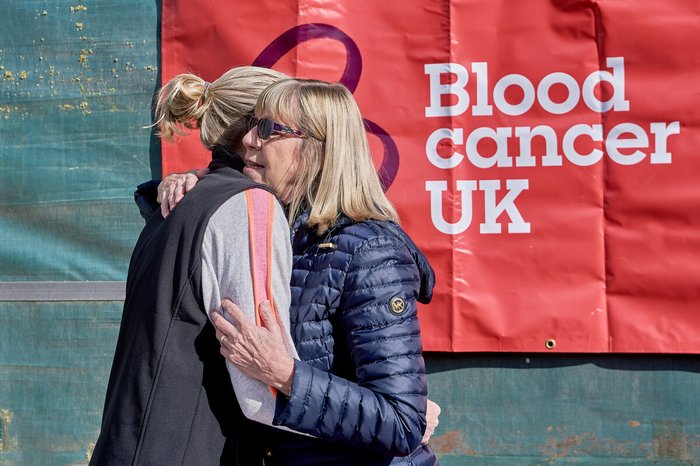Understand the survey behind the statistics
The majority of the insights featured in our campaign come from a 2023 study commissioned by Blood Cancer UK and conducted by market research agency Supernova.

How many people took part in the survey?
In total, the online survey reached 2,571 people. This included 1,442 people living with blood cancer, 1,059 with a personal connection to someone with blood cancer and 70 healthcare professionals (specialist doctors and clinical nurse specialists), who actively care for and treat people with blood cancer.
The anonymous survey covered a variety of topics including (but not limited to) how people talk about blood cancer; the language of healthcare professionals; the need for and impact of category establishment and awareness of the scale of blood cancer. We also asked questions which helped us understand the demographics and personal circumstances of survey participants.
How did we maximise our reach?
Multiple sample sources were used to maximise reach, and the demographic profile of the sample was allowed to fall out naturally to maximise the sample size; if a person was living with blood cancer, had a personal connection to someone with blood cancer or was a relevant health care professional, they qualified to take part.
The regional spread of the sample closely reflects what is representative for the UK and our sample also represents the spectrum of different types of blood cancer diagnoses.
What was the diversity of the survey respondents?
We observed skews on gender and age relative to what we might expect to see UK wide and within the blood cancer community. Furthermore, despite multiple sample sources, we also observed some skews when looking at the ethnicity, income and education level of our sample.
That said, our large sample size meant we had the ability to look at subgroups within all of these metrics, which ensured all marginalised groups’ voices were represented and included where differences of statistical significance exist (at the 95% confidence level). If any data is based on a sample size of less than 50, these have been called out for ease of reference. For instance, the base size for those with blood cancer who classified themselves as Asian, black, mixed or another ethnic origin is 35 and the base size for those who self-classified as having a White background is 1,397; the difference is statistically significant.
In addition to the statistics that came from this survey, we have also incorporated findings from other research:
Key facts booklet, Blood Cancer UK (2022)
- Blood cancer is the fifth most common cancer in the UK
- Blood cancer is the third biggest cancer killer in the UK
- 40,000 people are diagnosed with blood cancer every year
- There’s roughly 280,000 people living with or in remission from blood cancer in the UK
- 15,000 people in the UK still die of blood cancer every year
- When our charity was started, just one in ten children survived. Today, that has increased to nine in ten
Blood Cancer UK and YouGov Research (2022)
- Half of UK adults cannot name a single blood cancer symptom
Cancer Patient Experience Survey (2021)
- 31% of people with blood cancer have to visit their GP three or more times before being diagnosed, whereas in breast cancer this figure is only 7%
- 16% of people with blood cancer wait at least three months between first thinking something might be wrong and seeking medical attention, and one in 30 of them wait over a year
- In blood cancer, just 68% fully understand their diagnosis, compared to 81% of people with breast cancer or bowel cancer
Cancer Patient Experience Survey follow up survey, Blood Cancer UK and Anthony Nolan (2019)
- 76% of people with blood cancer say they were not told their condition was a type of blood cancer at diagnosis
Blood Cancer Data Dashboard (2019-2021)
- 30% of blood cancer cases are diagnosed after presenting to the NHS as an emergency. This is compared with just 3% in breast cancer and 7% in prostate cancer
Burns, R. et al. (2016) ‘Economic burden of malignant blood disorders across Europe: A population-based cost analysis’, The Lancet Haematology, 3(8)
- A blood cancer diagnosis is more financially costly than other types of cancer
Allemani, C. et al. (2018) ‘Global surveillance of trends in Cancer survival 2000–14 (Concord-3): Analysis of individual records for 37 513 025 patients diagnosed with one of 18 cancers from 322 population-based registries in 71 countries’, The Lancet, 391(10125), pp. 1023–1075.
- UK overall survival rate lags behind those of other high-income countries

